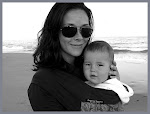

Knock. Knock.
Who's there?
BOO.
BOO WHO?
WHY ARE YOU CRYING?
Thank you Nicholas (my 10 year old) for that Halloween knock knock but the truth is safety is no joke. Know the best way to make sure your little one's BOO doesn't turn into BOO-HOO this Halloween? You got it... Prevention, Prevention, Prevention.
Your Top 5 Halloween Injury Prevention List
1. Bleeding Prevention
- Carving Jack-o-lanterns is super fun but can also be super dangerous if not properly supervised. Walk with me through the scene- Pumpkins? Check. Excited children? Check. Large sharp knives and saws? Check. Of course your kid wants to help carve and of course he thinks he's big enough to do it without your help. Not to don my Grinch costume but the truth is small children shouldn't be allowed to use a sharp knife or saw (at all) and older children should only be allowed to with close supervision (one adult:one child). I suggest buying one of the many kits available that come with tiny saws rather than using the family butcher knife. They are safer than knives although you can be cut by them as well. Little ones can still have lots of fun cleaning out the pumpkin and drawing a face on it, which you can carve for them. I'm not promising you won't have a small boo-hoo when you announce that you will be carving and not them, but I will promise that kind of boo-hoo won't send you to your local Emergency Department.
- Make sure that if your child is carrying a prop that the tips are smooth and flexible enough to not cause injury if fallen on.
2. Allergy Prevention
- If you're hosting a Halloween party this year check and see if anyone attending the party has food allergies to peanuts, dairy, shell fish to name a few. Many children with severe allergies carry epi (epinephrenine) pens. Make sure you know where the pen is kept and how to use it just in case. If you don't feel comfortable make sure the child is accompanied by a parent or caregiver who is.
- Avoid any candy with peanuts in your "give away" bowl.
- Instruct your children not to eat any treats until they bring them home to be examined by you. When your child is little, supervision of "candy eating" is important for multiple reasons- to insure the candy has not been tampered with as well as to oversee potential allergic reactions and choking episodes.
3. Poisoning
- Dry Ice is wonderfully spooky for parties. It's recommended however if using dry ice in a punch bowl, make sure you keep any dry ice chips out of drinks as it can cause severe injury if ingested. I recommend not putting the dry ice in the punch bowl (makes sense to keep the poison out of things my children are drinking). You can still use the dry ice for effect, just put it in it's own cauldron and instruct children not to touch.
4. Burns
- Outdoor Jack-o'-lanterns with lit candles should be kept away from where costumes could brush against the flame. Indoor jack-o'-lanterns should be kept away from anything that could be ignited- decorations, window treatments, coats, etc.
- Your child's costume should be fire resistant and free of loose flowing materials that could potentially brush over candles and catch on fire.
5. Pedestrian Accidents
- Make sure your child carries a flashlight, glow stick or has reflective tape on their costume to make them more visible to cars.
- Check that the eye holes on costumes and masks are large enough for good peripheral vision.
- Teach your kids basic everyday safety and remind them how the following rules apply to Halloween nights as well as daily living.
Don't get into cars or talk to strangers.
Don't run out into streets.
Do watch both ways before crossing streets.
Do cross only when the lights tell you to.
Do walk on sidewalks rather than on the street.
Do hold the hand of an adult when crossing busy intersections.
- Small children should never be allowed to go out alone on Halloween.
Btw, still looking for your own halloween costume? If you follow these tips, you can proudly announce that this Halloween you are going as the "safest Mom in the neighborhood". Share your knowledge and help keep this Halloween SAFE and HAPPY for everyone.

































